- Fact Checked
Last Updated: August 29, 2022
More and more people are choosing to go vegan, and many reasons exist. For some, it’s a way to reduce their environmental impact.
Others do it for health reasons, as a vegan diet can lower your risk of heart disease, obesity, and cancer.
Some vegans choose not to consume animal products for ethical reasons.
Whatever the reason, if you’re thinking about going vegan, you might be wondering what you’ll be able to eat. After all, giving up meat, dairy, and eggs can seem like a big challenge.
But there’s no need to worry! There are plenty of delicious vegan foods out there, including one that might surprise you: seaweed.
Seaweed is a great delicacy rich in lots of nutrients. Not to mention, it’s pretty versatile – you can use it in soups, salads, and even desserts.
Seaweed is one of those things that you probably don’t think about too often, even if you live near the ocean. But this humble plant plays an essential role in marine ecosystems, providing food and shelter for various marine animals.
Seaweed also has a long history of being used as a food source by humans. Some estimates suggest that we have been eating seaweed for over 10,000 years!
Today, seaweed is enjoying something of a renaissance, with more and more people incorporating it into their diets.
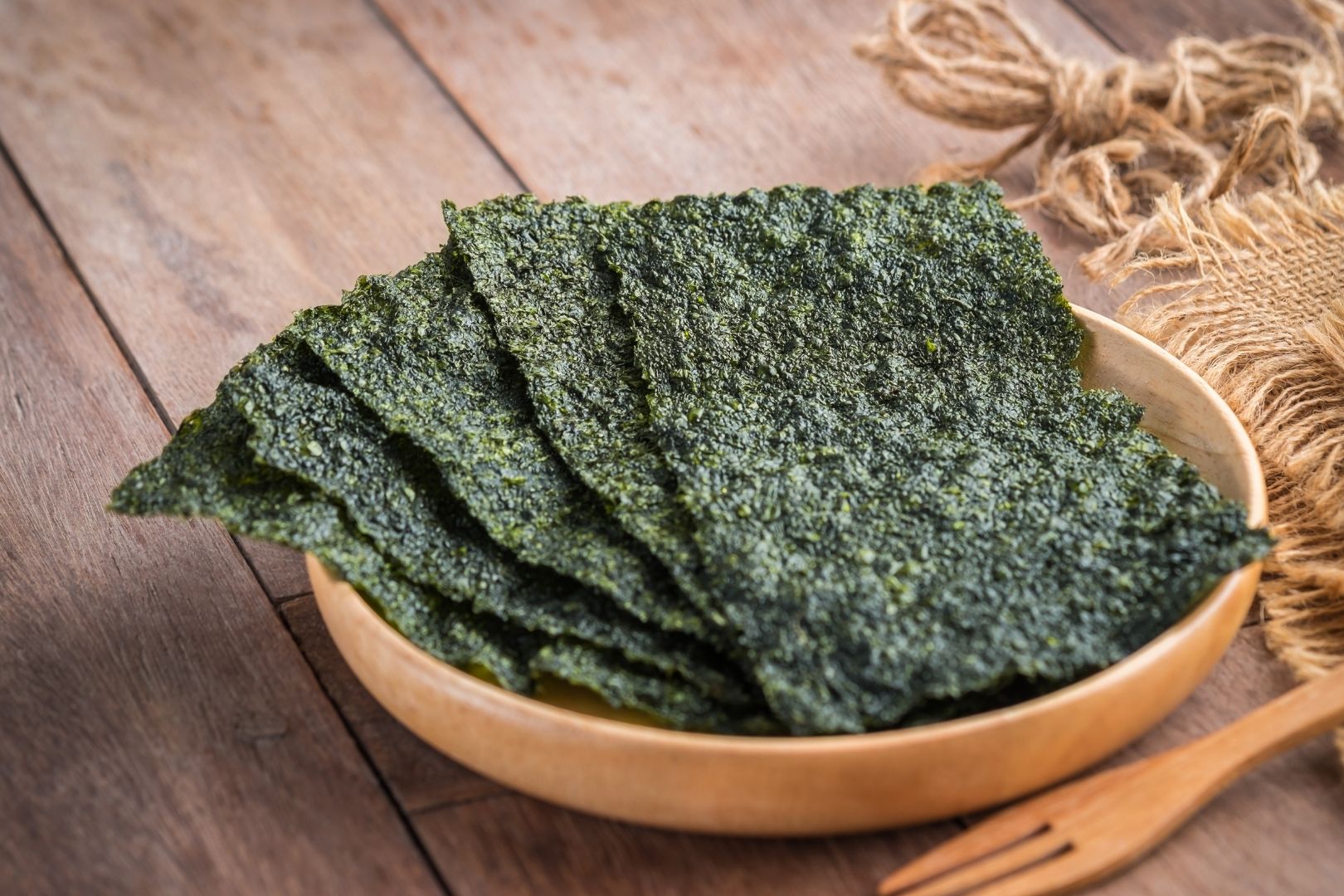
So, what exactly is seaweed? And why should you care? Here’s everything you need to know about this fascinating plant.
Seaweed is a type of algae that grows in saltwater environments. There are over 20,000 different species of seaweed, making it one of the most diverse groups of plants on the planet.
Seaweeds come in all shapes and sizes, from the tiny algae that form on the ocean’s surface to the giant kelp that can grow up to 100 feet in length.
Although they look very different from land plants, seaweeds are more closely related to mushrooms and other fungi (see also ‘Are Truffles Vegan?‘) (see also ‘Are Truffles Vegan?‘) (see also ‘Are Truffles Vegan?‘).
This may seem strange initially, but it makes sense when you think about it – after all, mushrooms and seaweeds grow in damp, dark environments.
As a vegan, you might wonder if seaweed is on the menu. After all, it’s a plant, so it should be safe for consumption.
Well, as mentioned earlier, seaweed is a type of algae, and some vegans consider it off-limits.
However, there is some debate on the subject, and to some, it comes down to personal preference.
But is seaweed vegan? The simple answer to that is yes. However, if you’re unsure whether to include seaweed in your vegan diet, here is some information that might help you decide.
Seaweed is considered vegan for a variety of reasons. Firstly, it is plant-based and does not contain any animal products.
Secondly, it is high in fiber and antioxidants, making it a healthy choice for vegans. Thirdly, seaweed is a low-calorie food, making it an ideal choice for those on a vegan diet.
Finally, seaweed contains no cholesterol and is rich in omega-3 fatty acids, making it a heart-healthy option for vegans.
Who would have guessed that the slimy seaweed could be so versatile? This humble ingredient is a powerhouse in the kitchen, lending its unique flavor and texture to various dishes.
Seaweed is most commonly associated with Japanese cuisine, used to make sushi and other traditional dishes.
But this humble seaweed has roots in Chinese cuisine and has been used for centuries as a seasoning or wrap (see also ‘What Lettuce To Use for Tasty Vegan Wraps‘) (see also ‘What Lettuce To Use for Tasty Vegan Wraps‘) (see also ‘What Lettuce To Use for Tasty Vegan Wraps‘). In Korea, seaweed is often used as a wrapping for steamed rice, while in Vietnam, it is often used as a garnish.
Seaweed is also gaining popularity as a health food among vegans and health-conscious individuals because of its nutritional value and benefits in weight loss.
While most people would probably lump all seaweed together, there is a great deal of variety in this ingredient.
There are more than ten types of edible seaweed, each with its unique flavor and texture. The most common types of seaweed used in cuisine are:
You might not be familiar with the name “nori,” but chances are you’ve eaten this type of seaweed.
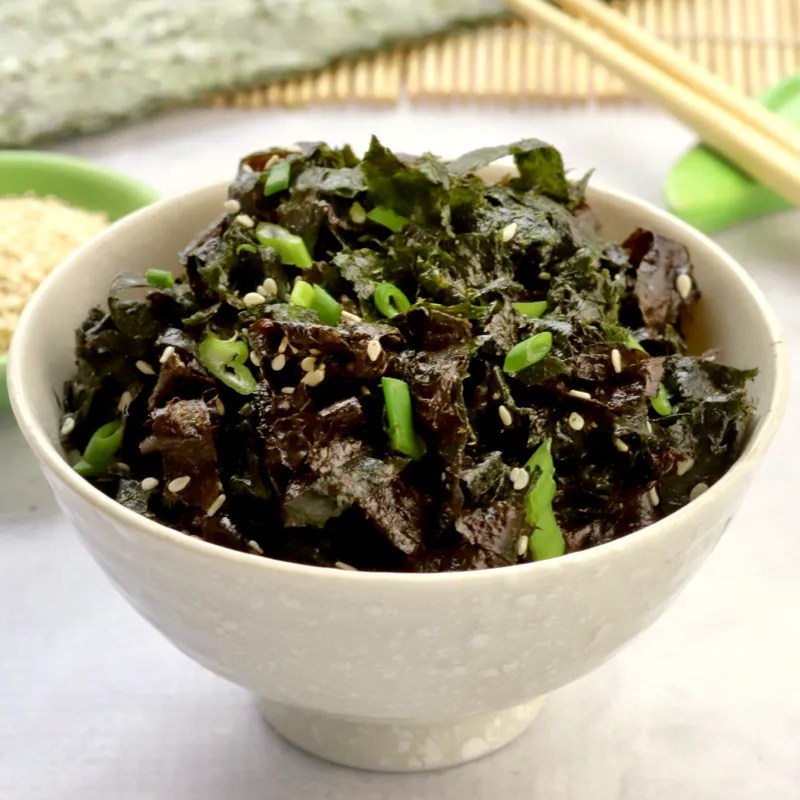
Nori is a popular ingredient in sushi, and it’s also used to wrap onigiri, a Japanese rice ball.
Nori is a type of algae that grows in cold, shallow waters. It’s most commonly found in the coastal areas of Japan, Korea, and China.
Nori is harvested by hand and then dried and pressed into sheets. The sheets are then roasted or toasted to give them a crisp texture.
Kombu is a type of seaweed that is most commonly found in the cold waters off the coast of Japan. It has a long, flat shape and a dark green or brown color.
Kombu is often used to make dashi, a broth used as a base for many Japanese dishes. The seaweed is also used as a wrap for sushi rolls and a topping for noodle dishes.
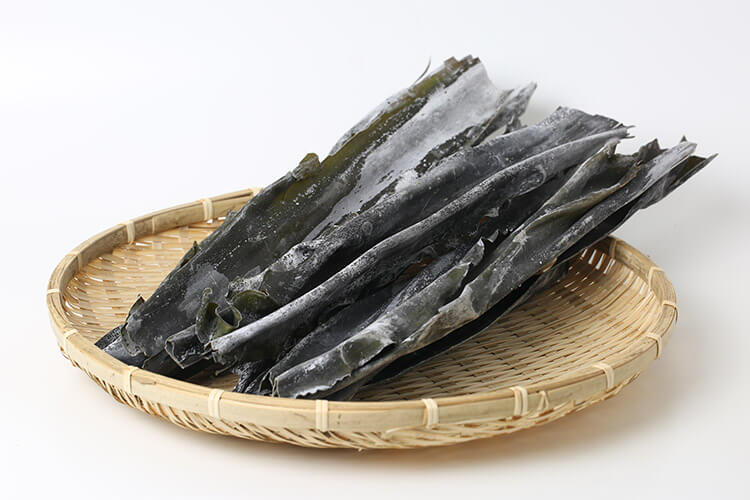
Kombu has a strong umami flavor and a chewy texture. When dried, kombu can last for several months. Fresh kombu should be stored in the refrigerator and used within a few days.
Dulse is a type of seaweed primarily found in the cold waters of the Atlantic and Pacific oceans. It has a long, dark purple or red stem with ruffled leaves that look like waves.
When dried, the dulse is chewy and slightly crunchy, with a salty and sweet taste. It is often eaten on its own or used as a seasoning in soups and stews.
The Wakame seaweed is a brown alga commonly found in temperate and subtropical waters worldwide.
It has a dark green or brown color, and its fronds are thin and delicate.
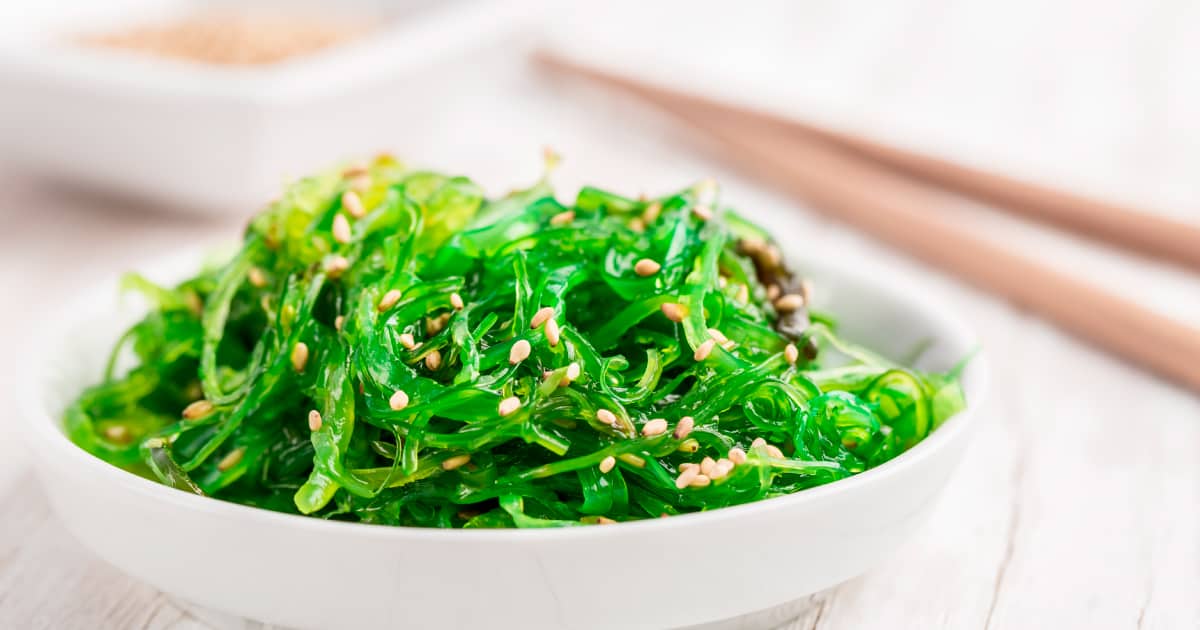 Wakame has a mild, slightly sweet flavor and a chewy texture. It is often used in soups and salads and is also a popular ingredient in miso soup.
Wakame has a mild, slightly sweet flavor and a chewy texture. It is often used in soups and salads and is also a popular ingredient in miso soup.
The Irish moss seaweed is found mainly in the Atlantic Ocean near the coasts of Ireland, Europe, and North America.
It’s been used for centuries in traditional Irish and Scottish dishes like this one for beef and Guinness pie.
In addition to its distinctive flavor, Irish moss is also known for its gel-like texture, which makes it a popular ingredient in vegan and vegetarian dishes as a meat alternative.
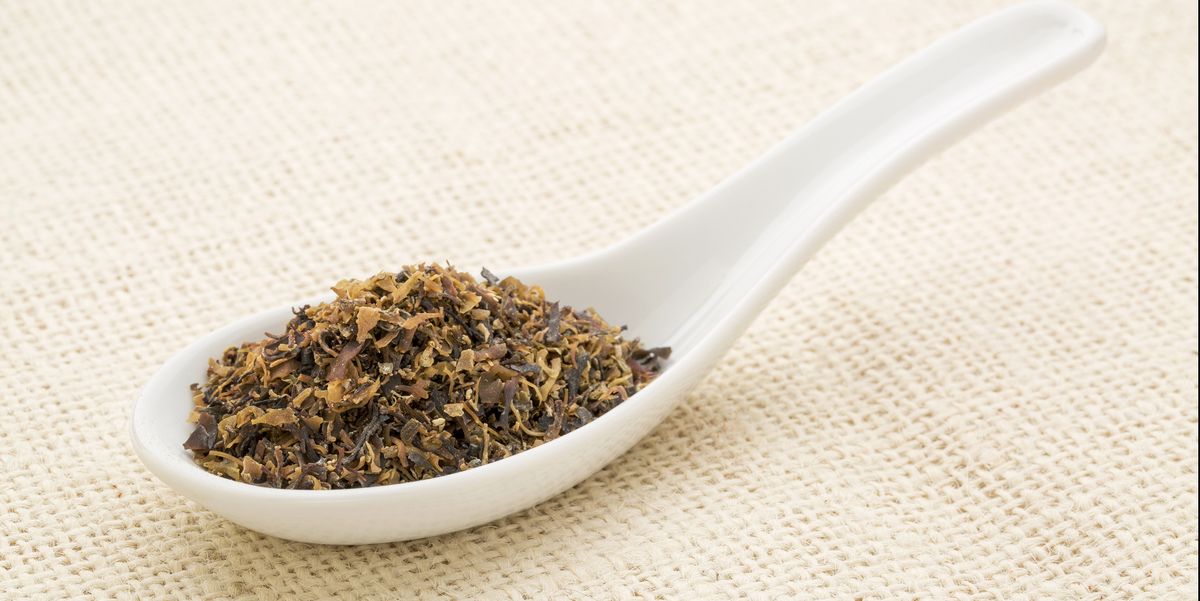
The plant is also used in cosmetics and skincare products for its alleged therapeutic properties.
Arame seaweed is a type of seaweed that is most commonly found in the waters off the coast of Japan. It has a long, slender shape and a dark brown color.
The texture of arame seaweed is slightly crunchy and has a mild, sweet flavor. Arame seaweed is often used in sushi rolls and other Japanese dishes. It can also be dried and used as a seasoning or garnish.
The Mekabu seaweed is mostly found in the coastal waters of Japan. It has a long, thin, flat shape with a ruffled edge.
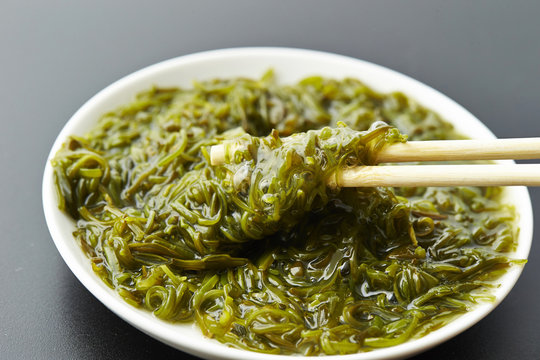
Mekabu seaweed’s texture is slightly chewy and has a slippery and slimy surface. It has a mild and slightly sweet taste.
Mekabu seaweed is often used in Japanese cuisines, such as soups, stews, and salads. It is also a popular ingredient in sushi rolls.
Sea lettuce is a type of seaweed found in shallow, coastal waters worldwide. It gets its name from its crisp, lettuce-like texture.
Sea lettuce is a green alga, often used as a food or an ingredient in cosmetics and soap.
It is also used as a biofuel. Sea lettuce is mostly found in the Baltic Sea, the North Sea, and the Mediterranean Sea.
Hijiki seaweed is a brown alga commonly found in the coastal waters of Japan and Korea. It has a long, thin, blackish-brown appearance and a crunchy texture.
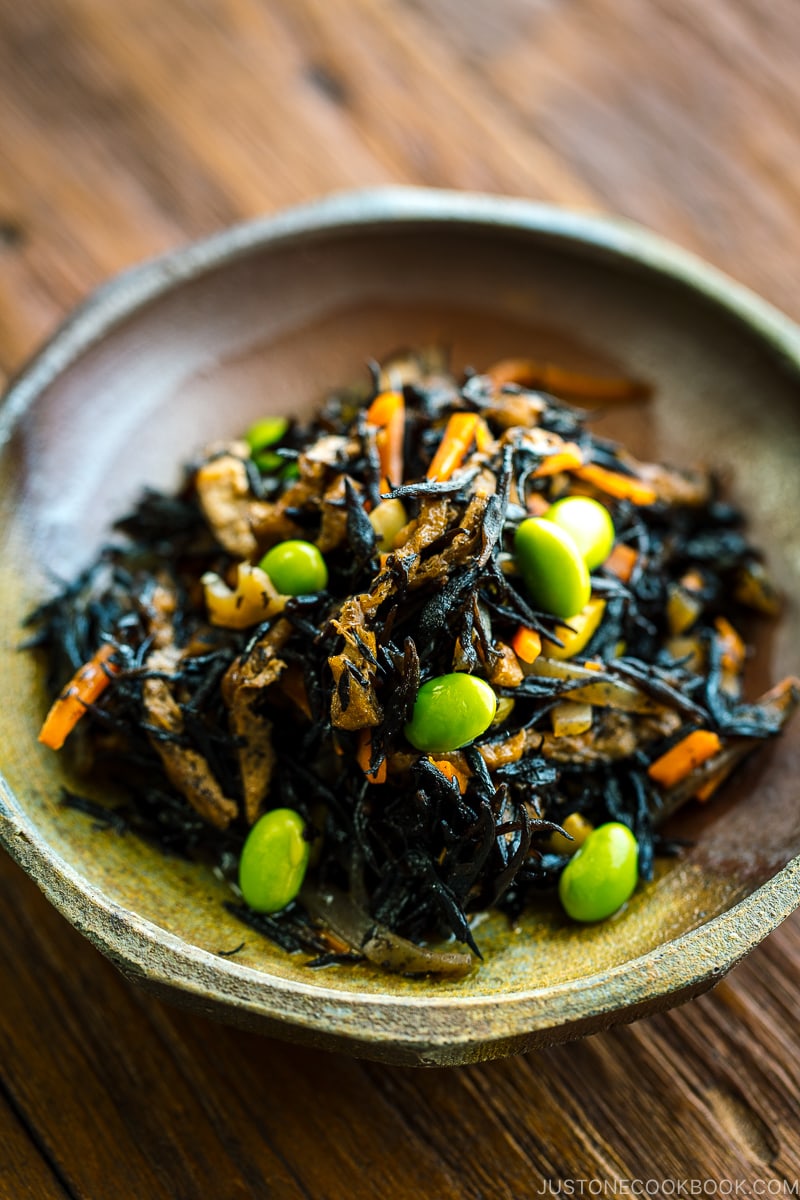
Due to its high nutrient content, hijiki is often used as a food ingredient in Asia.
While hijiki seaweed is safe to eat in moderation, consuming it in large quantities is dangerous due to its high sodium content.
Umibudo, also known as “sea grapes,” is a type of seaweed popular in Japan. It is found chiefly in the country’s coastal areas and has a distinctive greenish-purple color.
The texture of Umibudo is slightly chewy and has a mild, slightly salty flavor. Sea grapes are often eaten as a snack or used as a garnish for sushi and other dishes.
Some people say that seaweed tastes like the ocean. It has a slightly salty flavor and a chewy texture.
Others say that it tastes like spinach or kale. Some people even say that it has a hint of cucumber or melon.
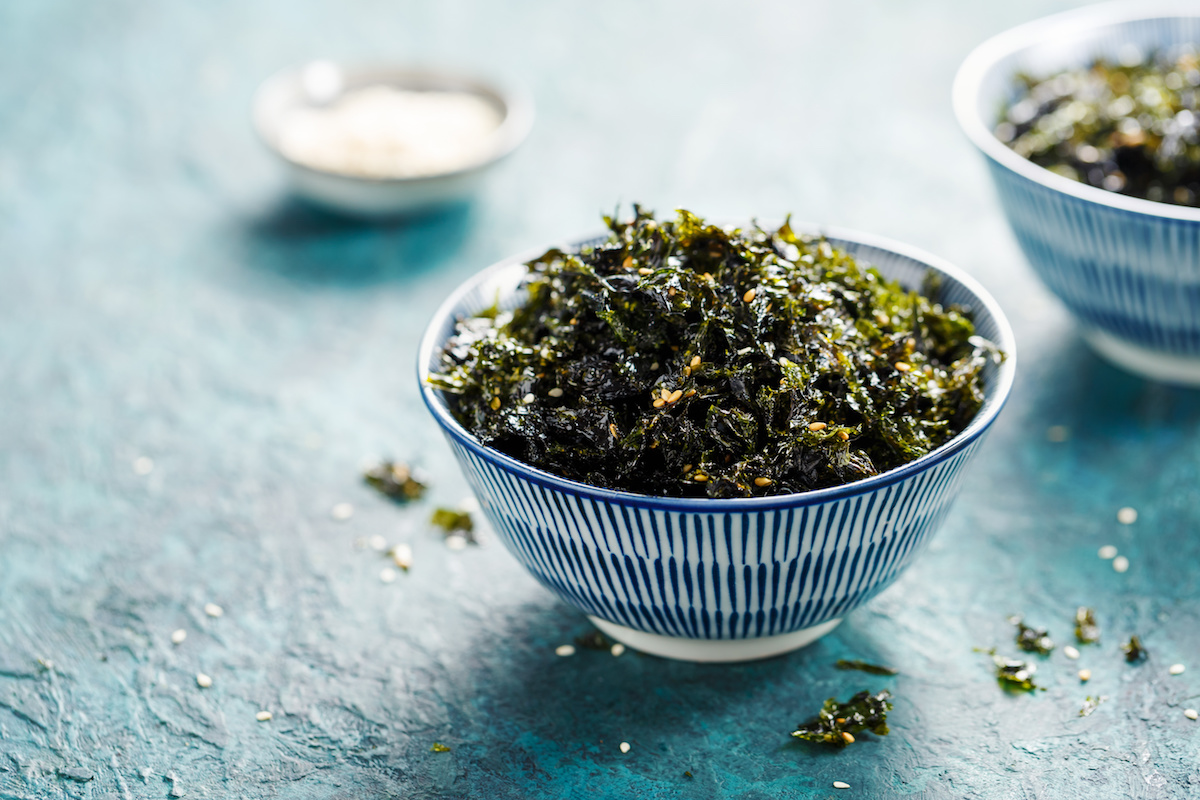
In general, seaweed has a salty, umami flavor. However, it can also be slightly sweet or bitter, depending on the type of seaweed.
Some people compare the taste of seaweed to sushi, while others say it tastes like ocean water. First, however, you must try it yourself to see what you think!
[thrive_leads id=’11437′]
Think seaweed is just for sushi? Think again! This sea vegetable is packed with nutrients and offers various health benefits.
Seaweed is a good source of iodine, which helps to support thyroid function. It’s also rich in vitamins A, C, and E, calcium, and magnesium.
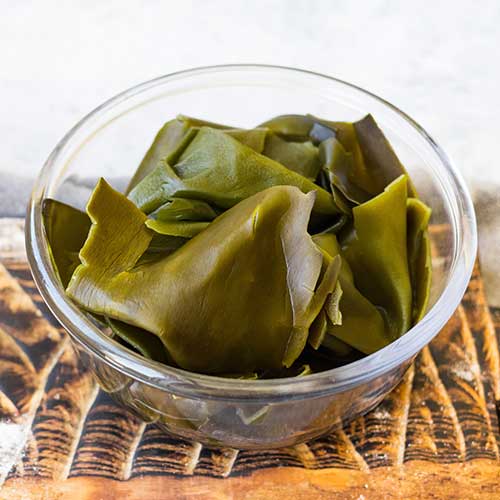
In addition, seaweeds are a natural detoxifier that can help remove heavy metals and toxins from the body. They’re also a great source of fiber, which can help to promote digestive health.
A recent study has shown that seaweed may even help to reduce the risk of obesity. Another study also showed that seaweed might help to reduce the risk of high blood pressure.
So, is seaweed vegan? The answer is yes, and it’s good for you too.
While most people think of seaweed as a sushi ingredient, it is a nutrient-rich vegetable with many health benefits.
Seaweed is a good source of iodine, vitamins, minerals, and fiber. It also has detoxifying properties and may help reduce obesity and high blood pressure risk.
Seaweed is a good pick as a meat substitute, especially for vegans. You can add it to your regular diet in moderate amounts to enjoy its health benefits.
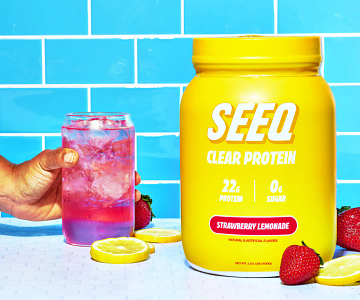

Address: 1300 Avenida Vista Hermosa, San Clemente, CA 92673, United States | Phone Number: +1 (949) 248-0131 | Email: contact@veganliftz.com